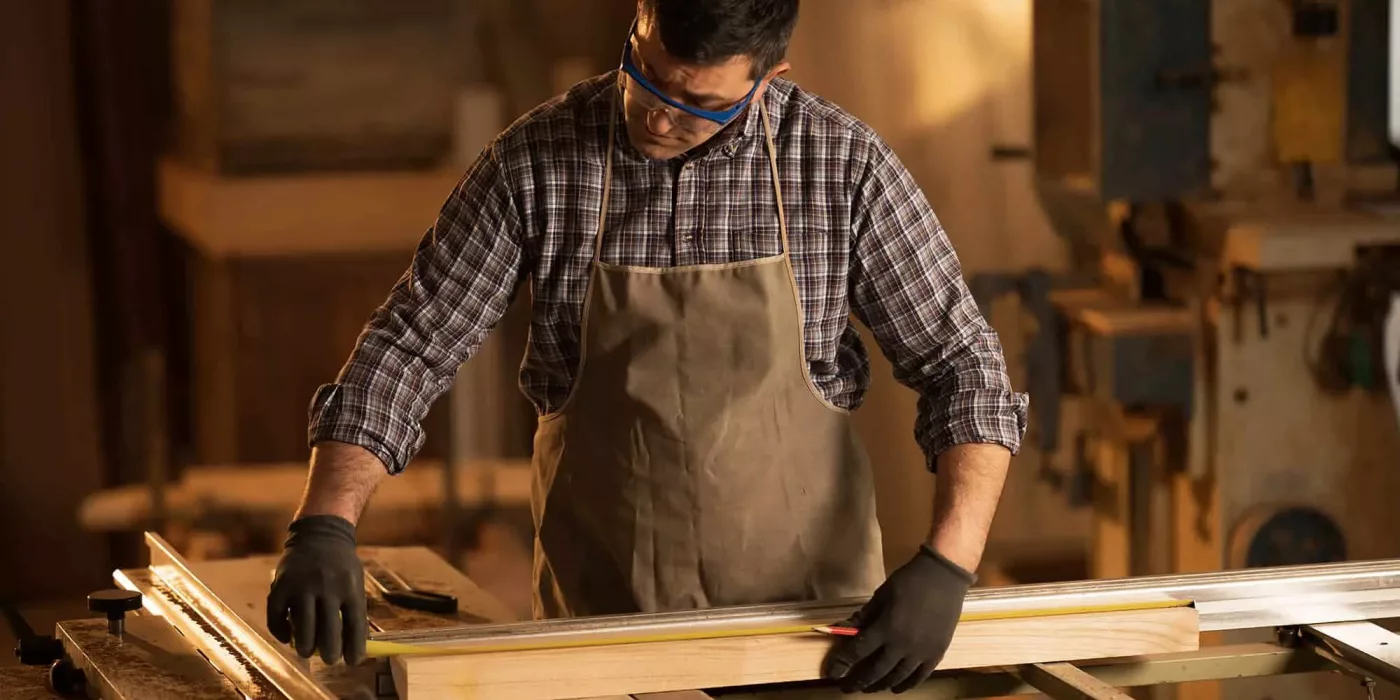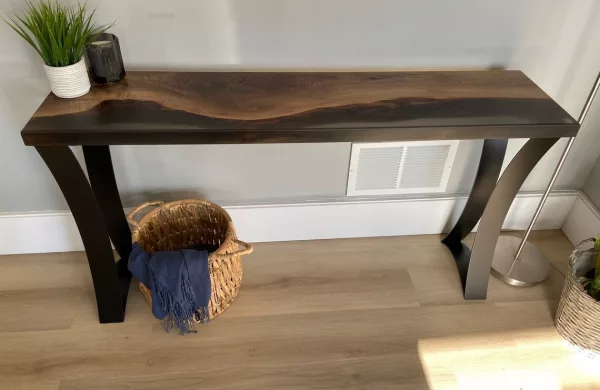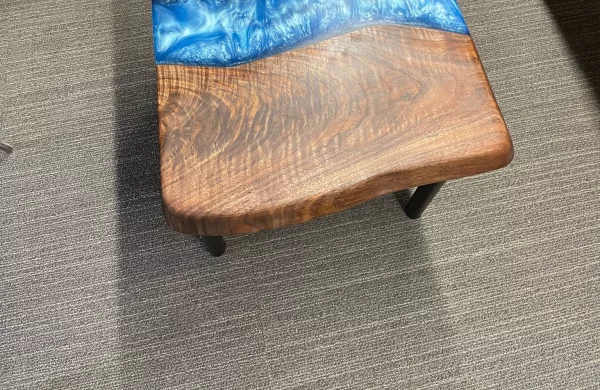
In the realm of furniture making, the quest for selecting the perfect wood is a journey into the heart of nature’s bounty. The kind of wood chosen for a table imprints its soul, defining not just its aesthetic appeal but also its longevity and resistance to wear and tear. But amongst the plethora of wood types, which one reigns supreme for crafting tables? Let’s delve into the characteristics of various woods to uncover their suitability.
1. Oak: The Stalwart Classic Durable, strong, and timelessly elegant, oak has been a favorite in the furniture realm for centuries. The dense grain of this hardwood, available in red and white varieties, makes it resistant to staining and warping, a testament to its steadfast presence in ancient European structures that still stand proudly today.
Interesting Fact: Oak’s strength was well-recognized in naval architecture. The famous HMS Victory, Admiral Nelson’s flagship at the Battle of Trafalgar, was constructed from around 6000 oak trees!
2. Walnut for tables: The Regal Choice Walnut, with its alluring dark coloration and fine, straight grain, exudes a regal quality. This hardwood polishes to a very smooth surface, presenting a luxurious finish that appeals to sophisticated palates. Beyond its beauty, walnut offers robust durability, making it a long-lasting investment.
Interesting Fact: Walnut wood was used to craft one of the most iconic pieces of 17th-century furniture, the “Nonsuch Chest,” detailed with intricate inlaid and gilded decorations.
3. Maple for tables: The Durable Blonde Praised for its strength and resistance to abrasion and wear, maple is a dense wood that can take quite a beating, making it ideal for tables that endure heavy use. Its naturally light color and uniform texture allow for a versatile foundation, conducive to various stains and finishes.
Interesting Fact: Beyond furniture, maple has a musical side; it’s a favored wood in violins, violas, and cellos, known to enhance the instruments’ resonance, clarity, and depth of tone.
4. Cherry for tables: The Fine-Grained Charmer Cherry wood is cherished for its uniform straight grain and smooth texture, allowing for a satiny, uniform finish. The unique aspect of cherry is its color transformation over time, from pale reddish-brown to rich, deep red, adding a warm ambiance to any space.
Interesting Fact: The iconic 18th-century furniture designer Thomas Chippendale favored cherry wood, using its fine texture and color to create some of his most memorable masterpieces.
5. Mahogany for tables: The Luxurious Staple Known for its classic, sophisticated aesthetic, mahogany boasts a straight, fine, and even grain with a lush reddish-brown hue that deepens over time. Its resistance to warping and wood rot contributed to its extensive use in high-end furniture and boatbuilding.
Interesting Fact: Mahogany had a royal debut in the Western world; it was introduced to English society by way of a gift to King George III, a “Mahogany Tea Caddy,” sparking its popularity in aristocratic circles.
6. Pine for tables: The Eco-Friendly Softwood While most premium tables are crafted from hardwoods, pine provides an affordable, lightweight alternative. This softwood is more susceptible to scratches but is favored for its environmental sustainability. Its unique knots contribute to a rustic aesthetic, perfect for a homely, cozy ambiance.
Interesting Fact: The oldest known piece of pine furniture is a simple chest discovered in the Oseberg Viking ship burial mound, dating back to 834 AD, underscoring pine’s long-standing role in furniture history.
7. Teak for tables: The Humid-Resistant Marvel Teak reigns supreme for outdoor furniture, renowned for its exceptional resistance to decay, insects, and weather variations, thanks to its natural oils. Even with minimal maintenance, teak tables can last decades, gracefully withstanding humid or rainy environments.
Interesting Fact: Teak’s resilience is globally recognized. It was a material of choice for the deck of the RMS Titanic, and in a testament to its durability, the teak deck chairs were among the few items recovered in good condition.
8. Cedar for tables: The Fragrant Choice Though less common for indoor tables, cedar carries unique qualities. Its defining feature is its aromatic scent, which also serves a practical purpose by repelling moths and insects. Cedar’s resistance to moisture, decay, and insect infestation makes it suitable for outdoor tables or humid climates.
Interesting Fact: The ancient Sumerians used cedar oil for embalming, leveraging its preservative and aromatic properties. Cedarwood was also used in the construction of King Solomon’s temple due to these attributes.
9. Bamboo for tables: The Sustainable Alternative Technically a grass, bamboo is celebrated in modern decor for its eco-friendliness, rapid growth, and renewable nature. Bamboo tables are surprisingly sturdy, with a tensile strength that rivals steel, and a unique, contemporary appeal perfect for an eco-conscious lifestyle.
Interesting Fact: The world’s longest bamboo bridge, in Kampong Cham, Cambodia, is rebuilt annually by the local community using bamboo, showcasing its strength and communal significance in certain cultures.
10. Hickory for tables: The Hardy Contender Among the hardest, heaviest, and strongest woods in the United States, hickory is not commonly used in furniture due to its weight and density. However, for those seeking an extraordinarily resilient table, hickory stands up to heavy use and can last several generations.
Interesting Fact: Hickory has historical significance in the USA, used in the construction of early aircraft and as the wood of choice for “Old Hickory,” President Andrew Jackson’s walking stick.
Concluding Thoughts: The “best” wood for your table harmonizes durability, beauty, and personal style with functional needs. While hardwoods like oak, walnut, and mahogany offer time-tested sturdiness and classic appeal, alternatives like pine and bamboo bring different aesthetics and benefits to the forefront. Ultimately, understanding each wood’s essence helps in selecting a material that resonates with your space, heart, and lifestyle.
This journey through the tapestry of various woods underscores not just the physical attributes of these natural wonders but also their historical, cultural, and environmental contexts. From the decks of historic ships to the hands of master craftsmen, these woods have stories etched into their grains, waiting to be a part of your living space narrative. Choose not just a piece of furniture, but a conversation starter, a tale of nature, history, and artistry.







